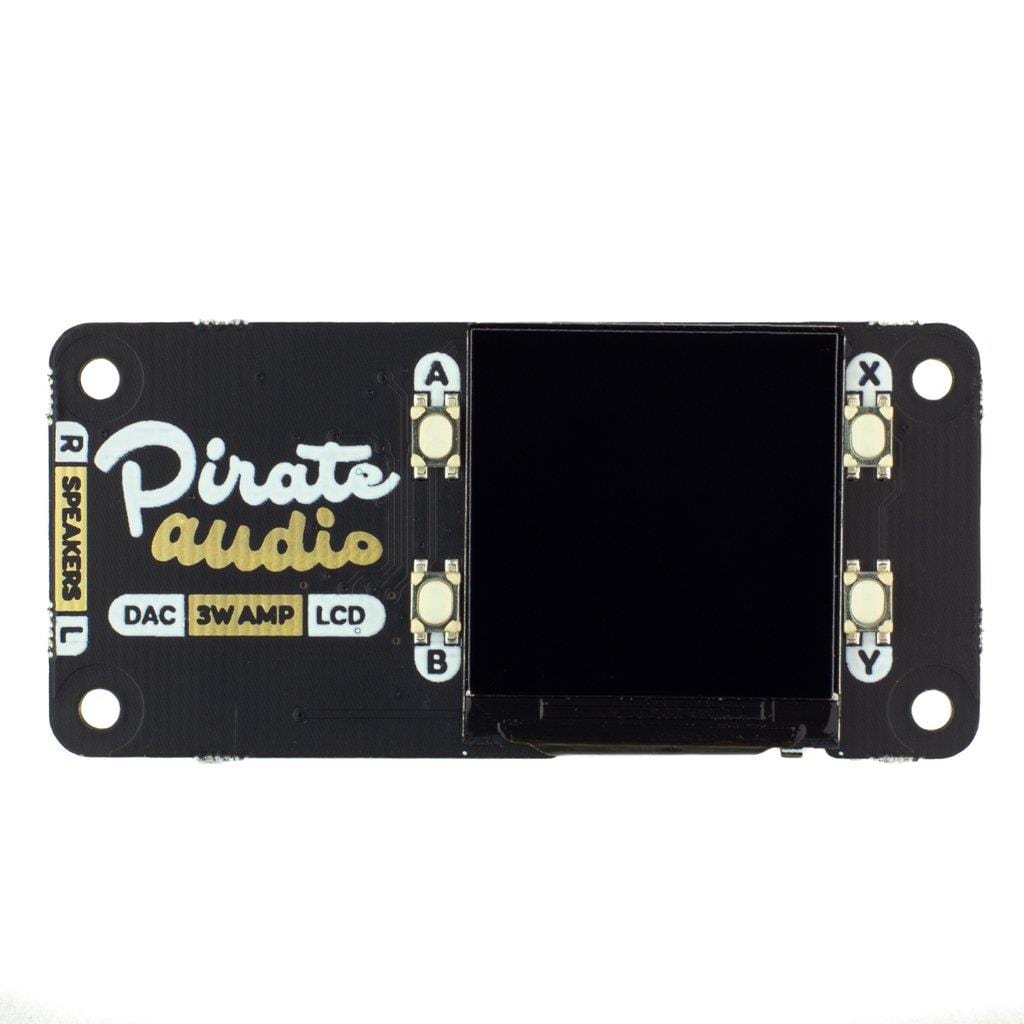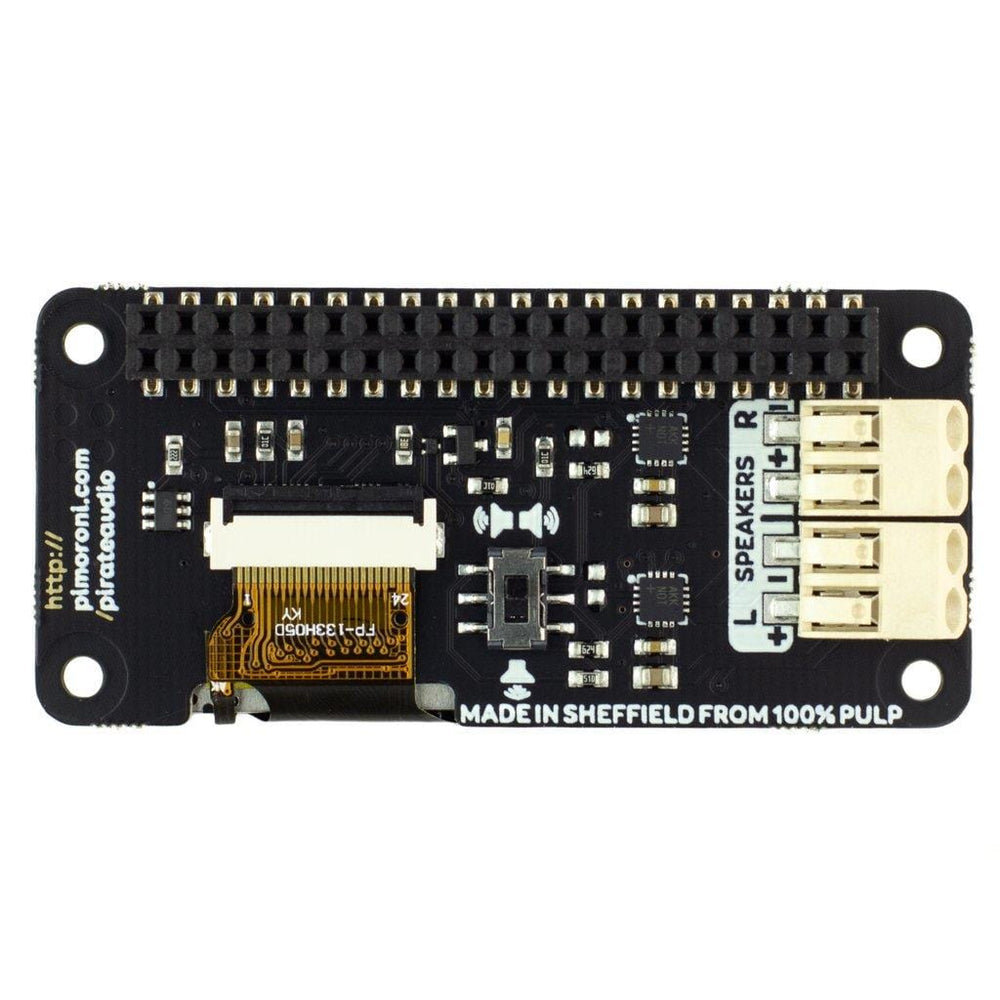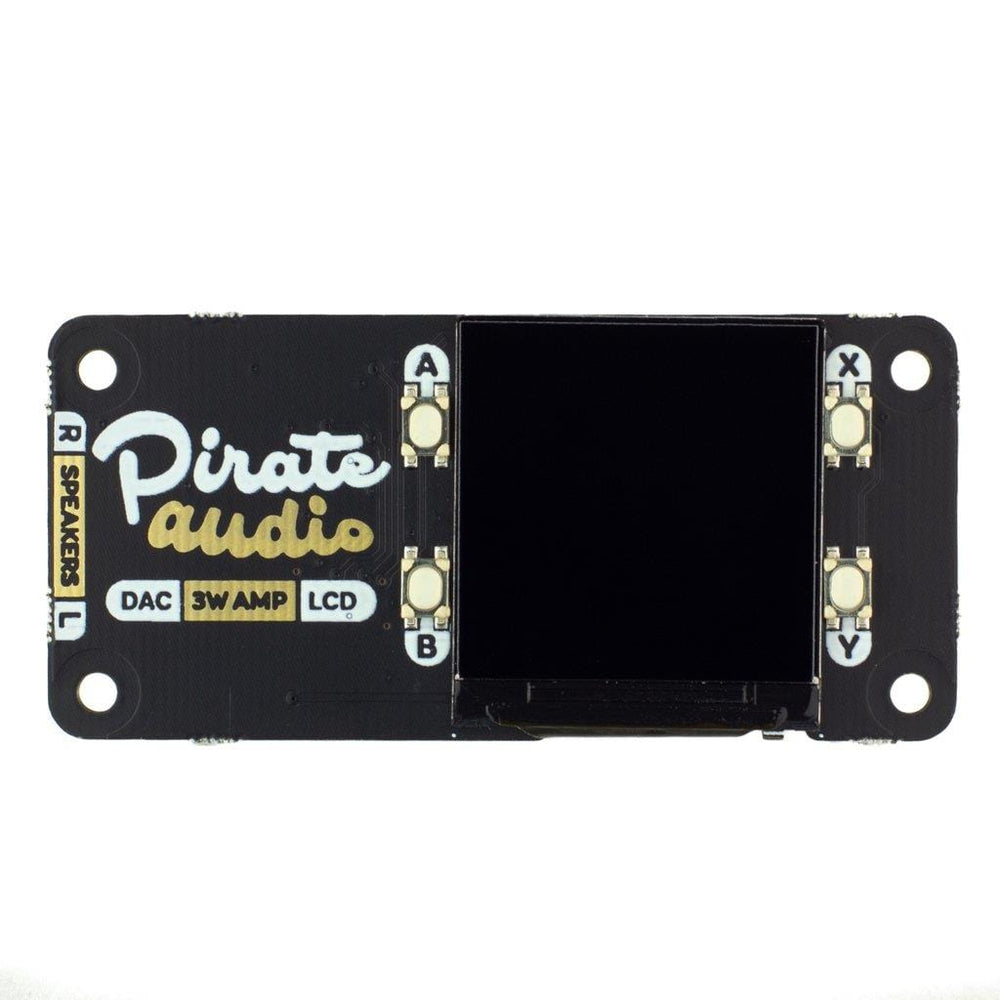


Login / Signup
Cart
Your cart is empty



Bring an old radio or set of speakers into the 21st century with Pirate Audio 3W Stereo Amp for Raspberry Pi!
Get punchy digital audio through the push-fit terminals and control your music with the built-in colour LCD and playback control buttons.
The push-fit connectors on Pirate Audio 3W Stereo Amp make it super-simple to connect up a set of speakers, whether they're bookshelf or floor-standing speakers, or the speakers in an old radio. Play crisp digital audio from local files (MP3, FLAC, etc.) or stream from services like Spotify. The combined DAC and amp gives you crisp 24-bit / 192KHz digital audio through your connected stereo speakers (or mixed-down mono through a single channel).
Pirate Audio is a range of all-in-one audio boards for Raspberry Pi, with high-quality digital audio, beautifully-crisp IPS displays for album art, tactile buttons for playback control, and our custom Pirate Audio software and installer to make setting it all up a breeze.
Features
Software
The Pirate Audio software and installer installs the Python library for the LCD, configures the I2S audio and SPI, and then installs Mopidy and the custom Pirate Audio plugins to display album art and track info, and to use the buttons for playback control.
Here's how to get started:
git clone https://github.com/pimoroni/pirate-audio
cd pirate-audio/mopidy
sudo ./install.shYou can find more detailed instructions here: https://github.com/pimoroni/pirate-audio/tree/master/mopidy or get tonnes more info in the Getting Started with Pirate Audio tutorial.
Notes
The installer, linked above, does all of the below for you, but if you're an intrepid hacker then you might need to know this stuff!
dtoverlay=hifiberry-dac to the /boot/config.txt file.gpio=25=op,dh to the /boot/config.txt file.










